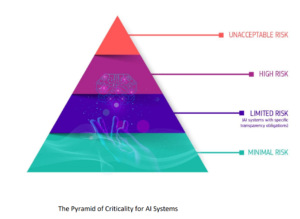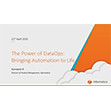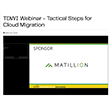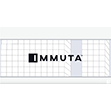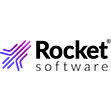

(EQRoy/Shutterstock)
The European Union’s AI Act hit another stage of enforcement over the weekend that will impact how companies can build and implement AI systems that impact or are used by European residents.
It’s been one year since the EU’s sweeping new AI Act went into effect. The first stage of enforcement of the law–which was first proposed by the European Commission in 2021 and was formally approved in March 2024–began in February 2025. It banned certain uses of AI deemed to have unacceptable risks, such as gathering of facial images from the Internet or closed-circuit TV.
On August 2, the second phase of enforcement began, which introduces two main requirements. The first is the requirement that all EU member states have established their national authorities to provide notification and surveillance. The second requirement is the beginning of enforcement of regulations concerning so-called “general purpose” AI (GPAI) models, which include language models and computer vision systems.
The AI Act has several requirements for GPAI models, including disclosure of training data and usage licenses. This means GPAI model providers must provide a detailed summary of the content used to train the model as well as proof of consent of people who generated the training data. For GPAI models gauged to pose “systemic risk,” the model providers must show how they’re evaluating the models, how they’re mitigating the risk, and report on any serious incidents.
“The sources used to train a general-purpose AI model that is made available to users in Europe wil have to be clearly documented,” Thomas Regnier, a European Commission spokesperson, told France24. “If they are protected by copyright, the authors will have to be remunerated and, above all, their consent will have to be obtained.”
Enforcement is set to begin for any new GPAI models put into production after August 2, 2025. For GPAI models that are already in production–such as those from US tech giants Google, OpenAI, Meta, and Anthropic as well as European AI company Mistral–the European Commission is providing another year’s grace period before enforcement begins. Failures to adhere to the new law can incur fines ranging range from €7.5 million (about $8.1 million) or 1% of turnover all the way up to €35 million (about $38 million) or 7% of global revenue. These fines are now in force.
To encourage compliance, the European Commission last month published the EU AI Code of Practice, a statement that’s intended to help companies comply with AI Act obligations on safety, transparency, and copyright issues. Many US tech giants and European AI firms signed it, while others did not. Google signed it, but not without reservations.
“…[W]e remain concerned that the AI Act and Code risk slowing Europe’s development and deployment of AI,” the company wrote in a blog post. “In particular, departures from EU copyright law, steps that slow approvals, or requirements that expose trade secrets could chill European model development and deployment, harming Europe’s competitiveness.”
Facebook parent Meta said it won’t sign the AI Code of Practice. “Europe is heading down the wrong path on AI,” Joel Kaplan, the head of Meta’s global affairs office, wrote on LinkedIn. “We have carefully reviewed the European Commission’s Code of Practice for general-purpose AI (GPAI) models and Meta won’t be signing it.”
The next phase of enforcement will involve so-called high risk AI systems, which the European Commission describes as AI systems used in areas like law enforcement, education, critical infrastructure, and credit scoring. Organizations deploying these types of systems will need to take extra precautions before they can deploy them, such as carrying out a risk assessment to determine if they violate fundamental rights, provide monitoring of systems, maintaining logs of these AI systems’ activities, and ensuring that support staff are trained.
Related Items:
Five Questions as the EU AI Act Goes Into Effect
EU Votes AI Act Into Law, with Enforcement Starting By End of 2024
August 7, 2025
- Oracle Helps Customers Achieve Extreme Availability and Performance for Mission-Critical and Agentic AI Applications
- Krutrim Partners with Cloudera to Power AI-Driven Innovation in India
- Elastic Introduces Logs Essentials: Serverless Log Analytics, in a New Low-priced Tier
August 6, 2025
- LF AI & Data Foundation Hosts Vortex Project to Power High Performance Data Access for AI and Analytics
- NetApp Accelerates VMware Migrations with Amazon Elastic VMware Service Integration
- BigID Powers AI Data Readiness with New Cleansing Capabilities for Sensitive and Regulated Data
- Gathr.ai Named a High Performer in G2’s Summer 2025 Grid Reports
- Accenture Invests in Snorkel AI to Help Financial Services Firms Transform Data into AI Solutions
- Espresso AI Launches Kubernetes for Snowflake to Renovate Data Warehouses
- BigID Redefines Data Classification with First-Ever AI-Powered Prompt Engine
- Redpanda Partners with Databricks to Deliver One‑Step Stream‑to‑Table Iceberg Integration for Real‑Time Lakehouses
August 5, 2025
- DataPelago Launches World’s 1st Accelerator for Apache Spark That Leverages Both CPUs and GPUs
- Reltio Unveils AgentFlow, A Set of Agents for Data Governance
- PCI-SIG Announces PCI Express 8.0 Specification to Reach 256.0 GT/s
- Monte Carlo Launches Native Salesforce Integrations for Data and AI Observability
- DDN Showcases AI400X3 Performance in Latest MLPerf Storage Benchmarks
- MLPerf Storage v2.0 Results Highlight Storage’s Role in AI Training at Scale
- Pantomath Raises $30M in Series B to Automate Data Operations with AI DRE Agent
- Cribl Unveils Cribl Guard, Redefining Sensitive Data Protection with Groundbreaking AI Capabilities
August 4, 2025
- Scaling the Knowledge Graph Behind Wikipedia
- Rethinking Risk: The Role of Selective Retrieval in Data Lake Strategies
- LinkedIn Introduces Northguard, Its Replacement for Kafka
- Top 10 Big Data Technologies to Watch in the Second Half of 2025
- What Are Reasoning Models and Why You Should Care
- Top-Down or Bottom-Up Data Model Design: Which is Best?
- Apache Sedona: Putting the ‘Where’ In Big Data
- Rethinking AI-Ready Data with Semantic Layers
- LakeFS Nabs $20M to Build ‘Git for Big Data’
- How To Keep AI From Making Your Employees Stupid
- More Features…
- Supabase’s $200M Raise Signals Big Ambitions
- Mathematica Helps Crack Zodiac Killer’s Code
- Promethium Wants to Make Self Service Data Work at AI Scale
- Solidigm Celebrates World’s Largest SSD with ‘122 Day’
- McKinsey Dishes the Goods on Latest Tech Trends
- AI Is Making Us Dumber, MIT Researchers Find
- BigDATAwire Exclusive Interview: DataPelago CEO on Launching the Spark Accelerator
- The Top Five Data Labeling Firms According to Everest Group
- Ryft Raises $8M to Help Companies Manage Their Own Data Without Relying on Vendors
- With $20M in Seed Funding, Datafy Advances Autonomous Cloud Storage Optimization
- More News In Brief…
- Seagate Unveils IronWolf Pro 24TB Hard Drive for SMBs and Enterprises
- Gartner Predicts 40% of Generative AI Solutions Will Be Multimodal By 2027
- Promethium Introduces 1st Agentic Platform Purpose-Built to Deliver Self-Service Data at AI Scale
- OpenText Launches Cloud Editions 25.3 with AI, Cloud, and Cybersecurity Enhancements
- TigerGraph Secures Strategic Investment to Advance Enterprise AI and Graph Analytics
- StarTree Adds Real-Time Iceberg Support for AI and Customer Apps
- Gathr.ai Unveils Data Warehouse Intelligence
- Graphwise Launches GraphDB 11 to Bridge LLMs and Enterprise Knowledge Graphs
- Databricks Announces Data Intelligence Platform for Communications
- Data Squared Announces Strategic Partnership with Neo4j to Accelerate AI-Powered Insights for Government Customers
- More This Just In…


